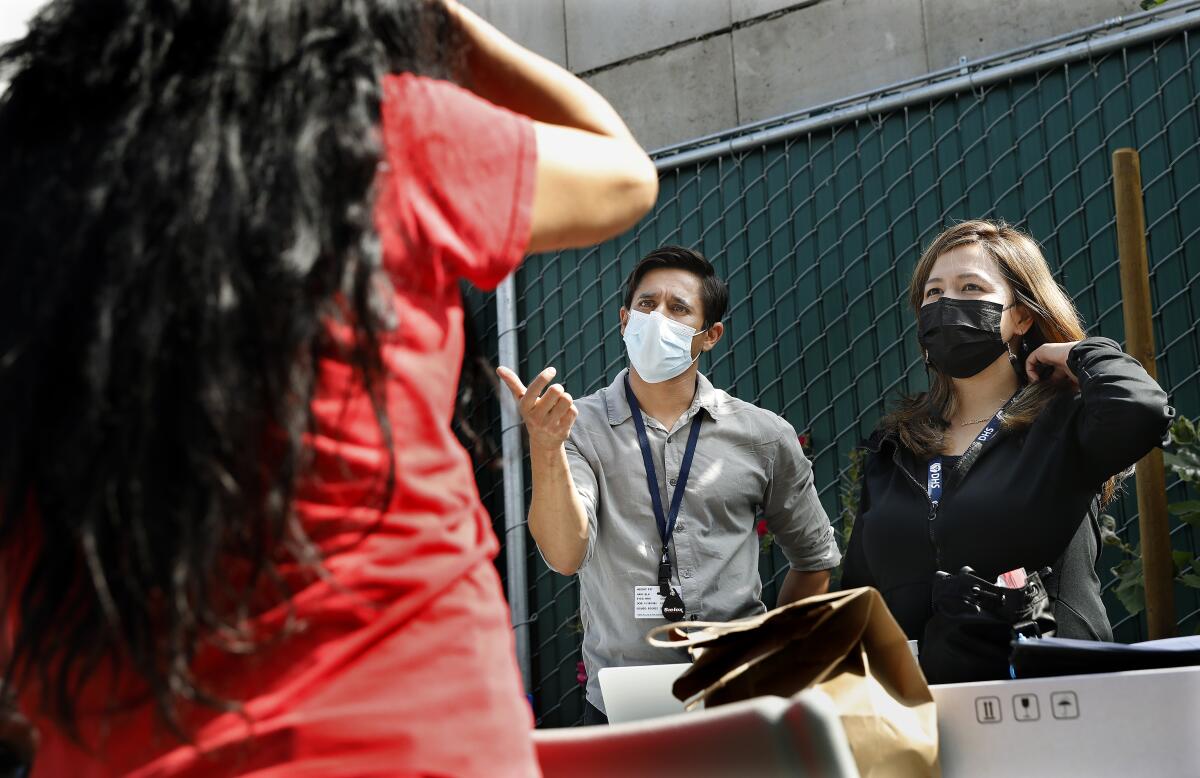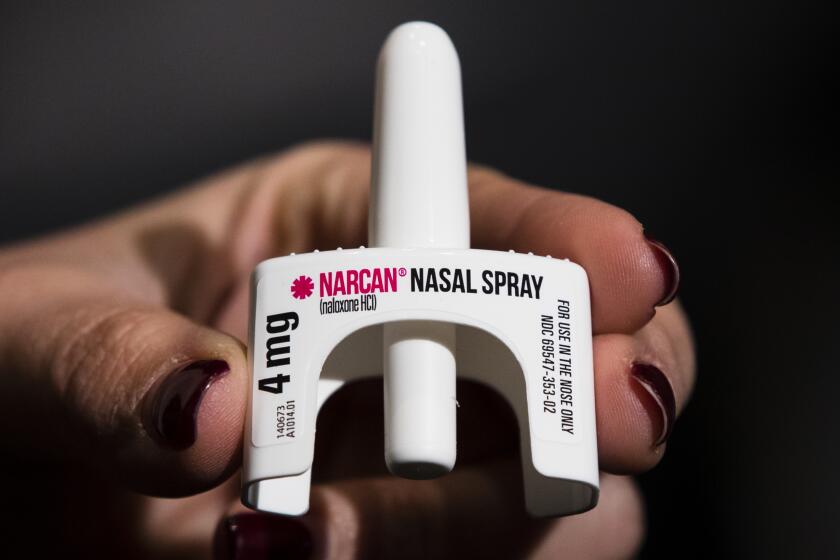L.A., we’ve got to talk about your meth problem

- Share via
Los Angeles has recently seen a series of knife attacks and other crimes in which suspects exhibit not just violent but bizarre behavior often attributed by the public to mental illness, but which professionals say have the hallmarks of something else entirely:
Meth.
Methamphetamine use is no secret. The addictive stimulant is a fixture in popular culture, on the big screen (“Winter’s Bone”) and the small (“Breaking Bad”). But when officials talk about the devastating effect of controlled substance misuse they generally focus on fentanyl, a powerful opioid.
If the goal of fentanyl laws is to prevent overdose and poisoning deaths, they should fund testing, treatment and information. Harsher criminal punishment only will only make the next drug even more deadly.
It is fentanyl that grandstanding politicians falsely claim is in Halloween candy or that can kill on contact with skin (it isn’t, and it can’t). It is fentanyl that they say is coming over our porous southern border and flooding our streets (true, but generally hidden among travelers and cargo entering legally, not among people illegally crossing into the U.S.). It is fentanyl that is the target of numerous bills in the state Legislature meant to crack down on drug crime by increasing penalties.
By contrast, lawmakers seldom focus on illicit methamphetamine and we in L.A. rarely talk about its effects on public safety and health, including psychosis that mimics serious mental illness. There is a widespread but mistaken belief among users that the drug is as legal to possess and use as cannabis, and no more dangerous. Even some law enforcement officials and physicians incorrectly believe that the law permits its use.
Although historically it has been the drug of choice for white motorcycle gangs and underemployed desert or Central Valley residents, its use is skyrocketing among L.A. and Inland Empire high school students who use it to concentrate while studying for exams, residents of housing projects who appreciate its affordability and ease of access, and people living on the street who want to stay awake all night to fend off attacks. Use among all socioeconomic groups expanded greatly in the last decade, according to the National Institutes of Health and other public health monitors.
Drug treatment funding drops patients too early to do them much good. Use city opioid settlement funds to make programs work again.
Meth rarely matches fentanyl’s presence in news stories, aside from sporadic busts such as the story last month after a cleaning crew discovered 235 pounds of meth in an Airbnb home in Alhambra. But it occasionally seeps into the discussion. After the April 21 early-morning break-in to Mayor Karen Bass’ residence, for example, police and substance use experts said the intruder’s actions sounded typical of someone in methamphetamine-induced crisis.
And indeed, suspect Ephraim Matthew Hunter told reporters he’d been in the midst of a five-day meth binge, paranoid and looking for a place to hide from an imaginary pursuer. It’s only by chance, he said later, that the house he broke into was the official mayoral residence. If that’s so, it could have been any house. While there’s no basis to argue all such break-ins or attacks on bus drivers or Metro passengers involved meth, it’s naive to argue that none of them did.
Violent attacks on the Metro system have scared riders and present an existential threat to public transit in Los Angeles. Leaders have to make major changes to keep the system viable.
L.A. has a serious meth problem, and it’s time to talk about it — frankly, clearly and publicly in a way that we have not yet done, at least not to the extent that we discuss fentanyl, mental illness, COVID-19 or even the measles.
Why hasn’t this come up yet? There are many possible reasons. Meth can seem so much less alarming than fentanyl, which can kill swiftly when ingested. Meth rarely does that. Instead of suddenly dying of overdose, long-term meth users tend to simply disintegrate, losing their teeth and suffering heart and other organ failure along with behavioral changes. Without sudden death, meth use may seem less of an emergency.
America responded to the 1980s crack epidemic with police and prisons instead of public health. Now look where we are.
There may also be less talk about meth because there is so little that can easily be done about it. There is no treatment like naloxone, which can temporarily reverse fentanyl or other opioid overdose. Or Suboxone, which can deaden opioid cravings and treat addiction.
Or it may be that the treatments we do have are so controversial. Contingency management is an incentive-based program with a short but solid record of success, but offering rewards to recovering users for each day their drug tests are clean holds little appeal for critics who demand more traditional treatment and tougher penalties.
Or maybe it’s because officials recognize how poorly Los Angeles and other jurisdictions responded to the crack epidemic of the 1980s and 1990s and are worried about repeating the same mistakes: fighting a dangerous public health crisis by investing too heavily and exclusively in arrest and imprisonment and too little in treatment and economic development, magnifying many times over the societal devastation caused by the drug.
When I got sober after a 10-year addiction to methamphetamine, it was overwhelming to relearn how normal people live each day.
Or it may be because the conversation, when it does take place, too often devolves into ideological extremes, with one faction insisting that the bulk of L.A.’s homeless population is on the street because of drug use, and another faction equally adamant that homelessness is solely a function of housing costs and has little connection to drug-induced dysfunction. Meanwhile, many homeless users say they took up the drug when they moved to the street, where meth is plentiful and cheap.
In any event, as meth use spreads and affects more lives, we can’t afford to avoid the conversation any longer. L.A. County has important programs aimed at helping meth users, but they don’t always complement each other well. A 4-year-old program to raise awareness was blunted by COVID-19.
The Board of Supervisors last week approved Lindsey Horvath’s call for a report from public health, mental health and other officials on the response to meth use, and it’s a welcome step. But in all-too-typical county fashion, the officials were given 90 days to respond. L.A. needs a greater sense of urgency to understand and deal with its meth problem.
More to Read
A cure for the common opinion
Get thought-provoking perspectives with our weekly newsletter.
You may occasionally receive promotional content from the Los Angeles Times.











